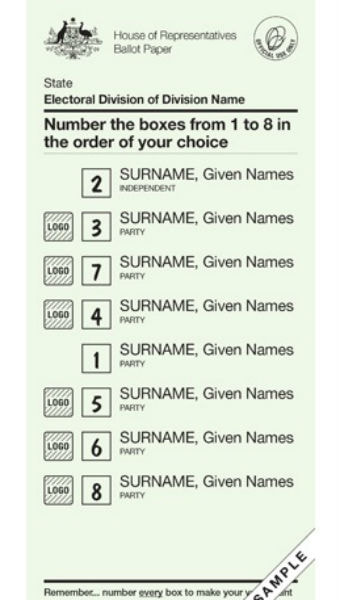|
Why should I run as a candidate if it’s unlikely I’ll get elected?
Firstly, Save the Planet is trying to get candidates elected. However, in Australia, a candidate can make, and has made a huge difference without getting elected. Influencing other parties In Australia candidates speak with each other during the election campaign at various times and more formally so they can order the preferences on their how-to-vote card (or senate preferences). This is the opportunity for climate emergency candidate to share ‘shock and awe speaking points’ with potential policy makers. The conversations Save the Planet candidates had with the likely councillors during the 2016 Darebin election campaign were key to getting Darebin to become the first council to pass a climate emergency motion thus kicking off the global council climate emergency movement. While most other parties do preference deals, Save the Planet preferences are based solely on climate policy (see an example here) so we can ask for more from other candidates. Through preferencing discussions, two other minor parties have formally adopted (although not followed through with) the suite of Save the Planet climate policies. Save the Planet tells the truth about the climate emergency. In candidate forums, we have seen other candidates once hearing the Save the Planet candidate speak, and advocate for more from their own party. Educating the Community Leafleting, door knocking, handing out how to vote cards, speaking at public forums, poster and stickers, and speaking directly to voters is how we share the climate emergency message with the public. The education focuses people on both the threat of global warming, the need solutions and the emergency mobilisation we need if we are to save ourselves. Every seat where we run a candidate will have a climate-emergency party name on the ballot exposing those voters to the concept of the climate emergency. (the ballot name is being negotiated with One Planet, the party we joined forces with to get registered). What if I’m not the best person to run? There is no current competition for who will be the candidate in each seat. If you meet all of the criteria below, you are most likely the best person to run:
What’s the difference between StP and other ‘climate’ parties? There are crucial criteria:
2. Emergency Mobilisation focus Restoring a safe climate, cannot be achieved via business as usual operations. We need the federal climate emergency declaration and then mobilise and prioritisation of resources to reduce and drawdown emissions and build societal resilience to current and coming impacts. This task is so huge it cannot be achieved via business as usual operations - or even tweaked business as usual. We need the federal climate emergency declaration and then a restructuring of federal and state governments to mobilise. 3. Broad climate policies that cover every sector of the economy Most other parties focus on stationary energy and transport only. Save the Planet has climate emergency policies on all sectors affecting global warming including energy, transport, forestry, land management, animal agriculture, population, democratic systems, climate justice, climate refugees, resilience geo-engineering and even the structure of our economy and monetary system itself. Most other parties define global warming as just an energy and transport issue. 4. Climate emergency targets Targets set the pace for how fast we need to work. Of course, this work should have started decades ago. Save the Planet’s targets are:
While these targets would be unrealistic under a business as usual scenarios, the are not for an emergency scenario. Beyond Zero Emissions has modelled and costed many sector plans. The question of how we would pay for this is immaterial. When governments undertake mobilisation, they print money. Why should Australia adopt such targets when we account for less than 2% of emissions (coal exports notwithstanding)? Because:
Wouldn’t I be taking votes from the lesser evil/my next favourite party/helping the worst party to win? Most Australians are confused by how our voting system works and think voting for a minor party or independent is a waste. This is simply not the case. As voters we rank the parties in order of our preferred choice on our ballot papers from "1" (most preferred) to least preferred. If no candidate gets the required number of votes to win, which in a single member electorate is 50% of the vote plus 1 vote, candidates with the least votes get knocked out and their votes are distributed at full value to remaining candidates. See this 1 minute video for a more detailed and graphical explanation. Multi-member (eg. Senate, Victorian Upper House) electorates are slightly more complex. However, the same principles apply: a minimum number of votes is required for each available position, and those candidates with the lowest number of votes are knocked out of the race and have their votes redistributed at full value until all the positions are filled. The only difference is that excess votes from candidates who have already been elected to a position have their votes redistributed at a reduced value proportional to the amount of excess votes they received until all positions are filled. Excess vote redistribution is explained in the following 7 minute video or Juice Media’s version here. What campaigning would be required as a candidate? The sky is the limit but at a bare minimum you would be required to:
How much would it cost? The cost of candidate registration $2,000 - Federal $250 VIC Local* $125 NSW Local* *TBC prior to the election The cost of printing leaflets/how to vote cards $200+ Social media hits Optional Coreflutes usually run around $20 each depending on the size of the order Other miscellaneous costs The AEC’s cost of running a Lower House candidate has doubled in price this election. However, fundraising could be part of the election campaign. What support is provided? Save the Planet provides template leaflets/how-to-vote cards, media releases and on call support. We provide candidate information pack and training face to face or via phone etc. During the election a national campaign manager will be available to answer your questions and provide support. When would I have to start campaigning? The sooner the better. Letterboxing is good anytime as material from political organisations is exempt from the ‘no junk mail’ sticker. What rights do I have - would I have to quit my job? This will depend on your employer. Public servants are usually ruled out from running in federal elections and most state elections (in Victoria the Human Rights Charter enables political candidacy in state elections but candidates still need to inform their manager they intend to run). Other employees will have to check with their union in the first instance and then their employer, who may turn out to be very supportive. What about other non-climate policies? Save the Planet candidates are expected to prioritise climate emergency messaging and not talk about other issues, as important as they may be, unless asked specifically i.e. by a member of the public or ask to speak at a non climate public forum. If speaking at a non climate focused forum you can focus on almost any topic to climate change with a bit of practice. The climate emergency is the most important issue to talk about. Without restoring a safe climate we have nothing. Other candidates will steer the conversation to other topics because they are not as difficult. If elected you are effectively an independent on non climate issues and can vote accordingly. How do I apply to become a candidate for the federal election? Go to this link.
1 Comment
|
AuthorsBloggers on this page include Adrian Whitehead, Philip Sutton, Bryony Edwards, Andrea Otto, David Lughermo. Categories
All
Archives
July 2022
|

 RSS Feed
RSS Feed
